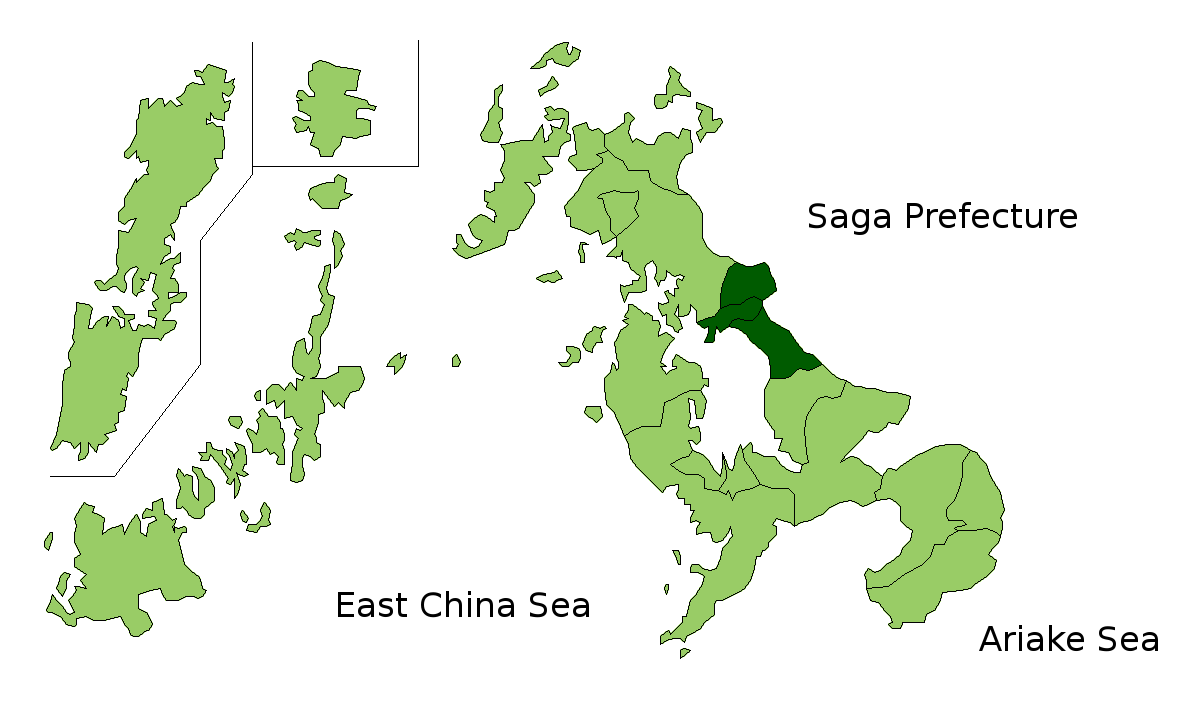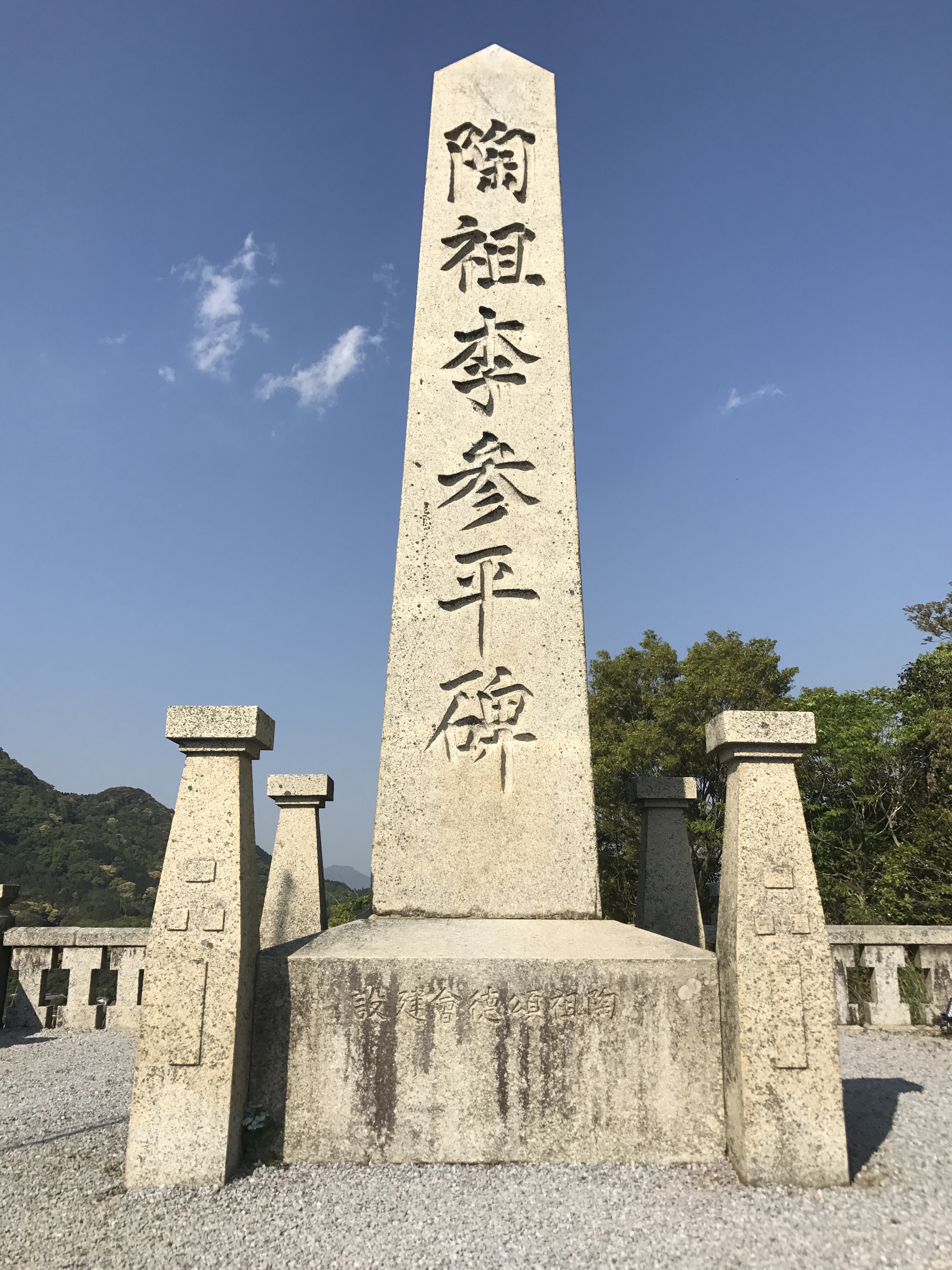|
Hasami
is a town located in Higashisonogi District, Nagasaki Prefecture, Japan. It is known, along with neighboring Arita, Saga Prefecture for its china manufacturing. As of 2 September 2021, the town has an estimated population of 14,511. The total area is 56.00 km2. Geography Hasami is located within the central part of Nagasaki prefecture, which is about 20 kilometers from central Sasebo. It is the only landlocked town in the prefecture. Surrounding municipalities * Nagasaki Prefecture ** Sasebo ** Kawatana * Saga Prefecture ** Takeo ** Ureshino ** Arita Culture Hasami is best known for Hasami ware, a type of Japanese porcelain dating back 400 years. The techniques were brought to the Hasami area by Korean ceramicist Yi Sam-pyeong, also the creator of Arita ware from nearby Arita. Hasami ware is distinct from Arita ware, but is often confused as pieces were shipped out of Arita or the neighboring port of Imari. Seventeen kilns and pottery houses are active in the ... [...More Info...] [...Related Items...] OR: [Wikipedia] [Google] [Baidu] |
Hasami Ware
is a type of Japanese pottery traditionally from Hasami, Nagasaki prefecture. Originally produced for common people, Hasami porcelain has a history of 400 years. In 1599, when the Korean potter Yi Sam-pyeong was brought to Japan by the feudal lord of the Ōmura clan, Ōmura Yoshiaki(大村喜前Ōmura Yoshiaki) after the Japanese Invasion of Korea, manufacturers in Hatanohara, Furusaraya, Yamanita and Hasami began the construction of climbing kilns and pottery centers. Typical Hasami porcelain uses underglaze cobalt blue and celadon, but at first they produced stonewares. Later the materials for porcelain were found, so gradually they started to make porcelain. They eventually became a specialty product in Omura Domain, where they produced the biggest quantity of porcelain in the country in the latter Edo period. Omura Domain established a Sarayama public office to manage and put more effort to manufacturing Hasami porcelain. Most of their products are for the daily usage s ... [...More Info...] [...Related Items...] OR: [Wikipedia] [Google] [Baidu] |
Nagasaki Prefecture
is a Prefectures of Japan, prefecture of Japan located on the island of Kyūshū. Nagasaki Prefecture has a population of 1,314,078 (1 June 2020) and has a geographic area of 4,130 Square kilometre, km2 (1,594 sq mi). Nagasaki Prefecture borders Saga Prefecture to the northeast. Nagasaki is the capital and largest city of Nagasaki Prefecture, with other major cities including Sasebo, Nagasaki, Sasebo, Isahaya, Nagasaki, Isahaya, and Ōmura, Nagasaki, Ōmura. Nagasaki Prefecture is located in western Kyūshū with a territory consisting of many mainland peninsulas centered around Ōmura Bay, as well as islands and archipelagos including Tsushima Island, Tsushima and Iki Island, Iki in the Korea Strait and the Gotō Islands in the East China Sea. Nagasaki Prefecture is known for its century-long Nanban trade, trading history with the Europeans and as the sole place of direct trade and exchange between Japan and the outside world during the ''Sakoku'' period. Nagasaki Prefecture is h ... [...More Info...] [...Related Items...] OR: [Wikipedia] [Google] [Baidu] |
Higashisonogi District, Nagasaki
is a district located in Nagasaki Prefecture, Japan. As of January 1, 2009, the district has an estimated population of 39,012 and a density Density (volumetric mass density or specific mass) is the substance's mass per unit of volume. The symbol most often used for density is ''ρ'' (the lower case Greek letter rho), although the Latin letter ''D'' can also be used. Mathematical ... of 233 persons per km2. The total area is 167.47 km2. Towns and villages * Hasami * Higashisonogi * Kawatana Districts in Nagasaki Prefecture {{Nagasaki-geo-stub ... [...More Info...] [...Related Items...] OR: [Wikipedia] [Google] [Baidu] |
List Of Towns In Japan
A town (町; ''chō'' or ''machi'') is a local administrative unit in Japan. It is a local public body along with prefecture (''ken'' or other equivalents), city (''shi''), and village (''mura''). Geographically, a town is contained within a district. Note that the same word (町; ''machi'' or ''chō'') is also used in names of smaller regions, usually a part of a ward in a city. This is a legacy of when smaller towns were formed on the outskirts of a city, only to eventually merge into it. Towns See also * Municipalities of Japan * Japanese addressing system The Japanese addressing system is used to identify a specific location in Japan. When written in Japanese characters, addresses start with the largest geographical entity and proceed to the most specific one. When written in Latin characters, ad ... References {{reflist External links "Large_City_System_of_Japan";_graphic_shows_towns_compared_with_other_Japanese_city_types_at_p._1_[PDF_7_of_40/nowiki>">DF_7_of_4 ... [...More Info...] [...Related Items...] OR: [Wikipedia] [Google] [Baidu] |
Kawatana, Nagasaki
is a town located in Higashisonogi District, Nagasaki Prefecture, Japan. As of October 1, 2021, the town has an estimated population of 13,221 and a density of 355 persons per km2. The total area is 37.25 km2. During World War II, manufacturing facilities associated with the Sasebo Naval Arsenal were constructed in Kawatana, leading to a temporary increase in population. The economy of the area is now heavily dependent on agriculture and fishing. Geography Surrounding municipalities * Nagasaki Prefecture ** Sasebo ** Hasami ** Higashisonogi * Saga Prefecture ** Ureshino Education Kawatana have a prefectural high school, the Kawatana Prefectural High School (長崎県立川棚高等学校, ''Nagasaki-kenritsu Kawatana Kōtōgakkō''), also known as Kawakō (川高). Meanwhile, the town also have a junior high school and three primary schools. There are also two special aid schools in Kawatana. Transportation Railway * JR Kyushu ** Ōmura Line: Ogushigō ... [...More Info...] [...Related Items...] OR: [Wikipedia] [Google] [Baidu] |
Takeo, Saga
is a city located in Saga Prefecture on the island of Kyushu, Japan. In 2011, the city government was the first in Japan to switch to using Facebook for its website. As of October 1, 2016, the city has an estimated population of 48,845 and a population density of 257 persons per km². The total area is 195.44 km². On March 1, 2006, the towns of Kitagata and Yamauchi (both from Kishima District) were merged into Takeo. Geography Takeo is located in the western part of Saga Prefecture. It is approximately west of Saga City and approximately east of Sasebo. Takeo has a complex topography including mountains, mountain basins and riverside plains. * Mountains: Mt. Mifune (210 m), Mt. Hachiman (764 m), Mt. Bi (518 m), Mt. Jinroku (447 m) *Rivers: Rokkaku River, Shiomi River, Yamanaka River Adjoining municipalities *Saga Prefecture **Arita **Imari **Karatsu ** Ōmachi ** Shiroishi **Taku ** Ureshino *Nagasaki Prefecture ** Hasami History *1889-04-01 - The modern municip ... [...More Info...] [...Related Items...] OR: [Wikipedia] [Google] [Baidu] |
Ureshino, Saga
is a city located in the western part of Saga Prefecture on the island of Kyushu, Japan. The modern city of Ureshino was formed on January 1, 2006, by the merger of the former town of Ureshino, absorbing the town of Shiota (both from Fujitsu District). Ureshino is locally known for the green tea grown there and its hot spring resorts. Adjoining municipalities *Saga Prefecture ** Kashima ** Takeo ** Shiroishi *Nagasaki Prefecture ** Hasami ** Higashisonogi ** Kawatana ** Ōmura History *1889-04-01 – The modern municipal system was established. The current city region is occupied by 6 villages (Gochōda, Higashiureshino, Kuma, Nishiureshino, Shiota and Yoshida). *1918-10-05 – Shiota was elevated to town status. *1929-04-22 – Nishiureshino was elevated to town status and was renamed Ureshino. *1933-04-01 – Higashiureshino was incorporated into Ureshino. *1955-04-01 – Yoshida was incorporated into Ureshino. *1956-09-01 – Gochōda and Kuma were incorporated into Shiot ... [...More Info...] [...Related Items...] OR: [Wikipedia] [Google] [Baidu] |
Yi Sam-pyeong
Kanagae Sanbee () in historical sources, was a Japanese potter who is said to have moved from Korea. He is often considered the father of Arita ware porcelain, although the narrative is today questioned by historians.Komiya Kiyora 小宮木代良, ''"tōso" gensetsu no rekishiteki zentei'' 「陶祖」言説の歴史的前提, Nitchō kōryū to sōkoku no rekisi 日朝交流と相克の歴史, pp. 363-381, 2009.Komiya Kiyora 小宮木代良, ''"tōso" gensetsu no seiritsu to tenkai'' 「陶祖」言説の成立と展開 (The origins and expansion of the story of ''Touso'', the first ceramist), Kyūshū Shigaku 九州史学, No. 153, pp. 49-74, 2009. He is honored in Sueyama Shrine of Arita as the father of Arita ware. Popular narrative Although there is no doubt that Kanagae Sanbee actually existed, almost no contemporary source mentions him. The story of "Yi Sam-pyeong" as seen today was gradually developed by the late 19th century by various parties with various intentions. ... [...More Info...] [...Related Items...] OR: [Wikipedia] [Google] [Baidu] |
Gangjin County
Gangjin County (''Gangjin-gun'') is a Administrative divisions of South Korea, county in South Jeolla Province, South Korea. Gangjin county proper was established in 1895. The county office is located in Gangjin-eup. The Gangjin Kiln Sites are a noted area for the production of traditional Goryeo celadon, and annually a big festival and symposium on celadon porcelain at the Goryeo Celadon Museum with participants from all over the world takes place in Gangjin city. Additionally, it is the birthplace of Koreans, Korean poet Yeongrang Kim Yun-sik, famous for his work in the 1930s and 1940s in the Jeolla dialect. The county bird is the magpie. The county flower is the camellia, and the county tree is the Ginkgo biloba, ginkgo. There are also two mascots, Gang and Jin, who represent fire and water, respectively, and who appear throughout the county on signs and sidewalks. A small portion of Wolchulsan National Park is located in Gangjin County. There is a monument to 17th-centur ... [...More Info...] [...Related Items...] OR: [Wikipedia] [Google] [Baidu] |
Brazil
Brazil ( pt, Brasil; ), officially the Federative Republic of Brazil (Portuguese: ), is the largest country in both South America and Latin America. At and with over 217 million people, Brazil is the world's fifth-largest country by area and the seventh most populous. Its capital is Brasília, and its most populous city is São Paulo. The federation is composed of the union of the 26 States of Brazil, states and the Federal District (Brazil), Federal District. It is the largest country to have Portuguese language, Portuguese as an List of territorial entities where Portuguese is an official language, official language and the only one in the Americas; one of the most Multiculturalism, multicultural and ethnically diverse nations, due to over a century of mass Immigration to Brazil, immigration from around the world; and the most populous Catholic Church by country, Roman Catholic-majority country. Bounded by the Atlantic Ocean on the east, Brazil has a Coastline of Brazi ... [...More Info...] [...Related Items...] OR: [Wikipedia] [Google] [Baidu] |
Mauá
Mauá () is a municipality in the state of São Paulo, in Brazil. Is part of the metropolitan region of São Paulo. The population as of 2020 is 477,552 inhabitants (11th largest city in population number of the state), the density is and the area is . The density is in fact bigger, since one third of the city is occupied by industries and 10% is countryside or forest. Its name comes from the Tupi language and means ''the one that is high''. As it's a municipality, it can also be translated as ''high city''. However, back when the city was a small village, its name was Pilar, then the name was changed in 1934 into Mauá as a homage to Visconde de Mauá, entrepreneur which built the Santos–Jundiaí railway that passes through the city. Mauá has the 23rd largest GDP of São Paulo state. Is the birthplace of Brazilian tableware industry. Economy Although there are various types of economic activity in the city (logistics, metallurgy, chemical and electrical materials, and pe ... [...More Info...] [...Related Items...] OR: [Wikipedia] [Google] [Baidu] |




